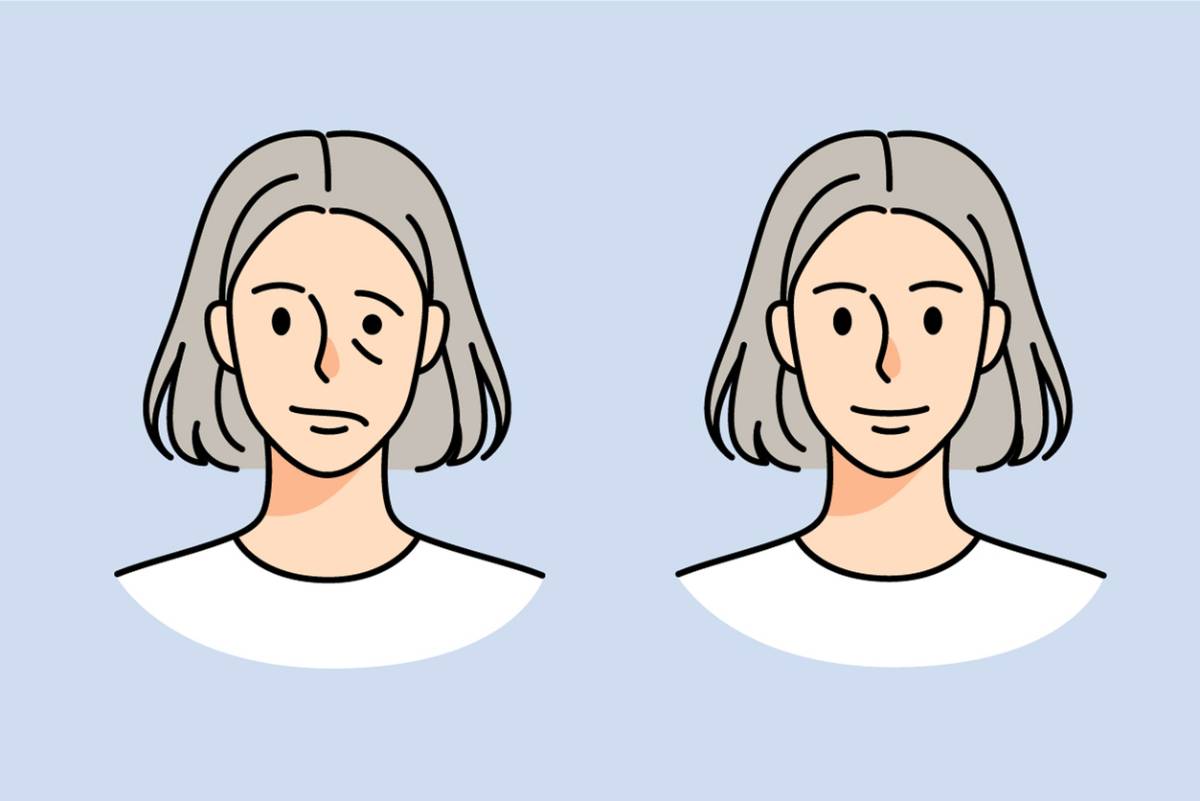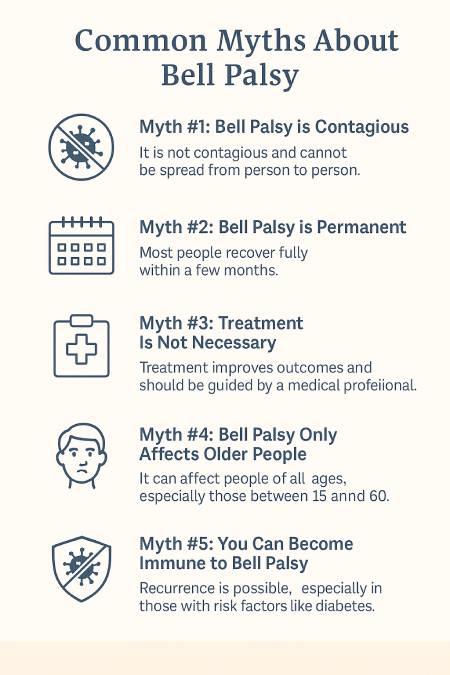Bell palsy is a condition that involves sudden facial weakness or drooping. In many cases, people may confuse it with a stroke. It is the same as a stroke and is a temporary condition. Bell palsy causes facial paralysis on one side of the face. It occurs when the facial nerves swell or become inflamed. It impacts the facial nerve that controls closing your eyes, blinking, and smiling. Many people recover from the condition after getting treatment. You may wonder, is Bell palsy contagious? Below, you will find myths about the condition.
Is Bell Palsy Contagious: Myths About the Condition
Medical conditions often come with a lot of myths. Debunking these myths can ensure you take the right measures for prevention. Bell palsy is often misunderstood, and there are several myths about the condition.
Myth #1: Bell Palsy is Contagious
Bell palsy is not contagious and cannot be transmitted from person to person. It is unlike the cold or flu, as you cannot get it from being around someone who has it. The condition has been known to be linked to certain viruses. These viruses have been linked to triggering the condition. However, this is rare and does not place you at risk for Bell palsy if you are around someone with the condition.
Myth #2: Bell Palsy is Permanent
The vast majority of people with Bell palsy recover from the condition in just a few months. Treatment for the condition depends on the cause and severity of the symptoms. Common treatments include eye care, such as eye lubrication in the form of drops or ointments. Some patients benefit from taping their eyes shut at night. However, more severe cases may require oculofacial plastic surgery. In very rare cases, symptoms such as facial tightness, dropping, or twitching can persist. Early intervention is key to a full recovery from the condition.
Myth #3: Treatment Is Not Necessary
Some people think there is nothing they can do if they have Bell palsy. This is not true, and treatment is often necessary. While facial paralysis can sometimes resolve on its own, it is safer to consult with a medical professional. Early intervention is key in addressing the condition. There are several treatment options depending on the severity of the symptoms and cause of Bell palsy. An oculofacial plastic surgeon can assess the issue and provide a customized treatment plan.
Myth #4: Bell Palsy Only Impacts Older People
Bell palsy can impact people of all ages, including teens and young adults. The most common age group affected by the condition includes those ages 15-60. However, children and older adults have been impacted by the condition. There are several risk factors associated with Bell palsy, including pregnancy, diabetes, and family history. Understanding your risk is important to take preventative measures. However, you cannot prevent the condition entirely.
Myth #5: You Can Become Immune to Bell Palsy
There are several illnesses you can become immune to if you contract it once. However, Bell palsy is not one of them. If you have Bell palsy once, you can have it again. This is rare but possible. Recurrence is often due to having certain risk factors. Common risk factors that lead to the recurrence of the condition include diabetes or a history of certain viral infections. Every time you experience Bell palsy, it is important to seek medical attention. A medical professional can determine the cause of the issue and rule out any serious issues.
Treatment for Facial Paralysis
If you experience facial paralysis, contact the team at Clarity Eye and Face today to schedule your consultation!


